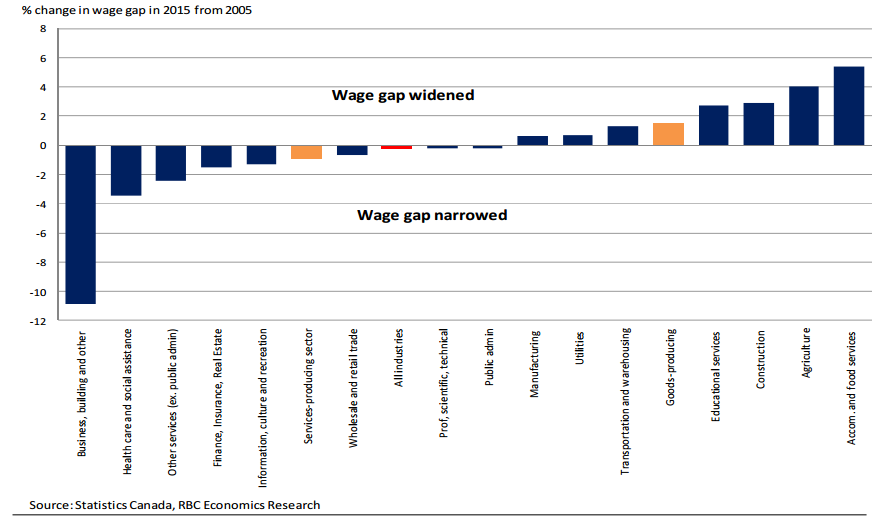It’s International Women’s Day today, the time of the year for dusting off that time-tested statistic showing that women still make a certain number of cents for every $1 a man makes.

READ MORE: Sophie Gregoire Trudeau’s muddled message: Men must be on board to improve women’s rights
For Canadian women, that figure currently stands at $0.88 for every $1 earned by men, according to a report released by RBC today.
But what does that mean, exactly?
Many Canadians don’t know what their hourly pay is and certainly don’t think of their remuneration in terms of cents on the dollar.
READ MORE: ‘Fearless Girl’ statue stares down Wall Street bull to mark International Women’s Day
So Global News dug up some of the numbers showing what the gender gap looks like in different industries in terms of average weekly pay.
The results are striking. According to data from Statistics Canada, the pay difference actually widened in both traditionally male-dominated sectors like construction and industries with a strong female presence like education.
READ MORE: Redefining the f-word: What does feminism look like today?
In 2016, the average weekly pay for a man working in construction was $1,194, compared to only $877 for a female worker. In education, men were making on average $1,224, compared to $1,028 for women.
Education was also one of the sectors where the pay gap actually widened, according to RBC:
As the chart shows, the worst offenders in terms of a widening pay gap are the accommodation and food services industry and the agriculture sector.

Get weekly money news
Below are two graphs showing male and female pay in both sectors since 1997. In both industries, the pace of wage growth for female workers appears to have plateaued in the past few years.
The pay gap is also alive and well in the public sector — despite much hand-wringing by politicians. In 2016, men in public administration jobs were making an average of $1,407 per week, compared to $1,177 for women.
WATCH: Sophie Grégoire-Trudeau comments on earlier social media post praising men on International Women’s Day

And, notably, there are no industries in Canada where women out-earn men, at least according the classifications Statistics Canada used for the dataset we examined.
Admittedly, some of those categories are very broad. “Professional, scientific and technical services,” for example, lumps in anything from public relations to computer system design.
So there may be some jobs, and even some more narrowly defined industries, where women earn more.
Still, the numbers unequivocally show that equal work for equal pay is still a mirage for most Canadian women.









Comments